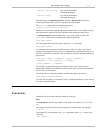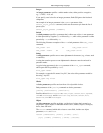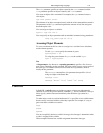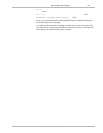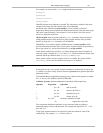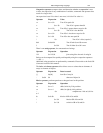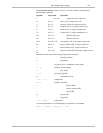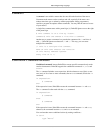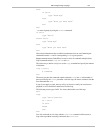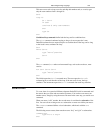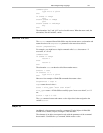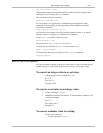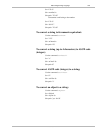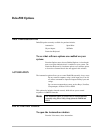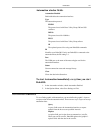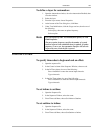
Macro Programming Language 125
Deko500 User’s Guide
else
if $a==5
type "Good-bye"
else
type "Wish you were here"
end
end
…or more elegantly by using the elseif command:
if $a==1
type "Hello"
elseif $a==5
type "Good-bye"
else
type "Wish you were here"
end
Notice how indentation makes conditional statements easier to read. Indenting the
commands between if and its corresponding end is a good practice.
Loop commands instruct Deko500 to execute a series of commands multiple times.
Loop commands include loop, while and for.
The easiest way to define a loop is to use the loop command and specify the number
of iterations:
loop [count=]
# commands
end
The macro executes the command sequence between loop and end the number of
times specified by the count parameter. After the loop, the macro continues with the
first command after end.
If you do not supply a count, the loop will go on forever or until you cancel macro
playback or use a conditional statement to end the loop.
The following macro types “hello” five times, then breaks out of the loop:
$a=1
loop
type "hello";newline
$a = $a+=1
if $a>5
break
end
end
You also can break out of a loop with the continue command, which restarts a
loop at the top without executing commands after continue.



